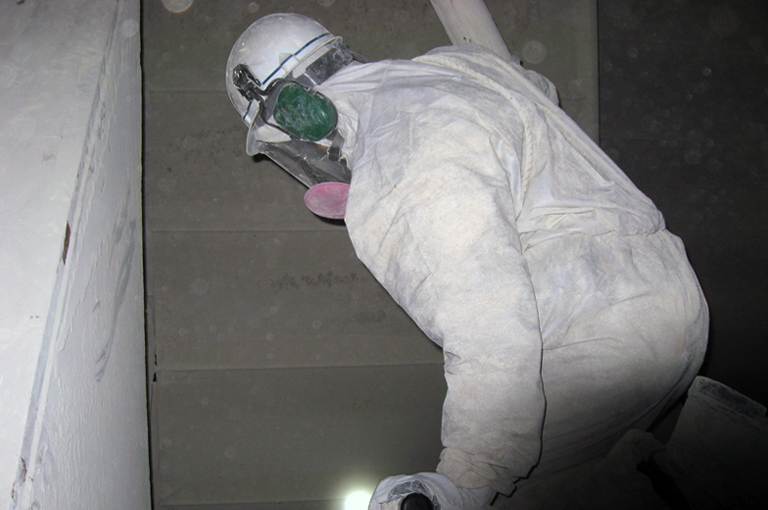For decades we have been helping paper mills maintiain the reliability of their air pollution control equipment, identify cost-effective ways to improve performance, and provide products, services, and training to improve the consistency of operations and ease of troubleshooting at the mill.
Our approach is to understand your challenges and what solving it means to your mill. This means that the intent isn’t lost through the process, and you get to realize the results you need at the lowest cost.
What We Can Do for Paper Mills
For more than 40 years, the Neundorfer team has been dedicated to improving the performance of our customers’ air pollution control systems. We understand the unique needs within the paper industry, and the importance of cost control and reliability. As changing markets and regulations have altered the type of support our customers need, we have adapted alongside them. Today, we support our customers by maintaining continuous compliance, planning for production flexibility, and ensuring reliable equipment, all while reducing costs.
Cost Control
Power Optimization is one of the simplest areas for cost savings at a paper mill. ESPs on recovery boilers, lime kilns, and power boilers tend to be power hogs. But, with most ESP designs, there is a point reached where additional power input does not produce significant collection efficiency. Using software to intelligently manage power input can result in signficant power savings. We offer voltage controls and a software package that allow customers to realize these savings while managing opacity. Read about one paper mill that realized power savings of $8,000 per month on one boiler.
Most baghouses are over cleaned resulting in reduced bag life and emissions issues. Optimizing baghouse cleaning can increase its capacity and reduce operating and maintenance costs. Optimizing the cleaning cycle with a feedback-based control can increase baglife and decrease energy consumption. Read more about the three misconceptions of baghouse operation.
Targeted inspections offer another opportunity to control costs without sacrificing realiability. Precipitator operating data can be utilized to identify what to look for, and in which sections, during an outage. This can save money and manhours, and result in a work scope that will only involve the work that needs to be completed for the reliability required of the precipitator. Read about our approach to inspections and performance-based maintenance. Baghouse Inspections and Assessments should be tied to achieving reliability, maintaining dp at optimal levels, and increasing baglife at the lowest cost. Read more about our approach to baghouse inspections.
When faced with the need for projects to improve emissions compliance or maintain the reliability required of the equipment, it is important to understand what path will get the results you need at the lowest cost. We have been helping paper mills plan equipment refurbishments and upgrades, with cost, performance, and reliability in mind for years. Read about our approach to upgrades through predictive modeling.
Reliability & Consistent Operations
Targeted inspections not only save money, they also improve reliability, allowing you to focus your limited resources on the sections that have the greatest impact on overall performance. Reviewing data over time allows you to build a plan to take advantage of short outages, addressing reliability concerns in small windows of time.
At times, the best route to combat reliability is to build more operating margin into the precipitator. This can be done effectively through changes to precipitator powering and flow modification, postponing or eliminating the need for more costly mechanical upgrades. At other times, mechanical refurbishments or upgrades are required to achieve the operating margin, reliability, and compliance that is needed from the precipitator. We can help you execute these changes, as well as help you determine the best path at your facility.
Precipitator automated voltage controls and software can help maintain operational consistency, and also ease the pain of the increasing knowledge gap at mills. Our software packages are aimed at reducing variability across operators while allowing for automated changes to operations when process conditions change. And our training approach is focused on increasing the knowledgebase in your plant, by building internal experts to obtain and interpret data to guide inspections and make incremental improvements to performance.
Performance Improvement
Paper mills face some unique challenges when it comes to optimizing the performance of electrostatic precipitators. Ash chemistry, particle size, and dust loading make collection more difficult than many other applications. In addition to these challenges, the precipitators also tend to have issues with corrosion.
Most precipitators are over-rapped, which can increase baseline opacity and particulate emissions, as well as cause undue wear on the internal components. This is especially problematic for paper mills where the chemistry typically requires more ash build-up on the plates prior to rapping in order for it to be collected in the hoppers. Often, optimizing rapping can lead to lower baseline opacity and improved relability of internal components. Read more about rapping components,reducing re-entrainment, and ways that we can help you optimize performance of your precipitators.


